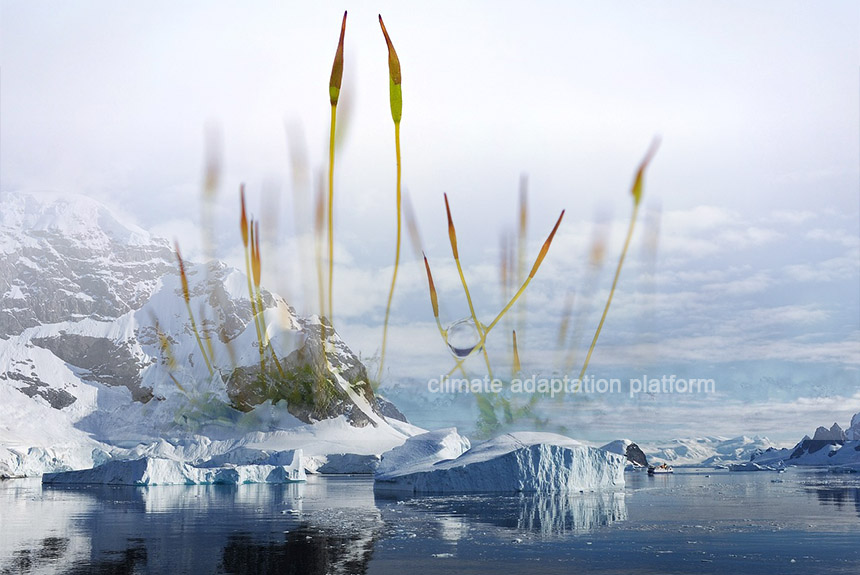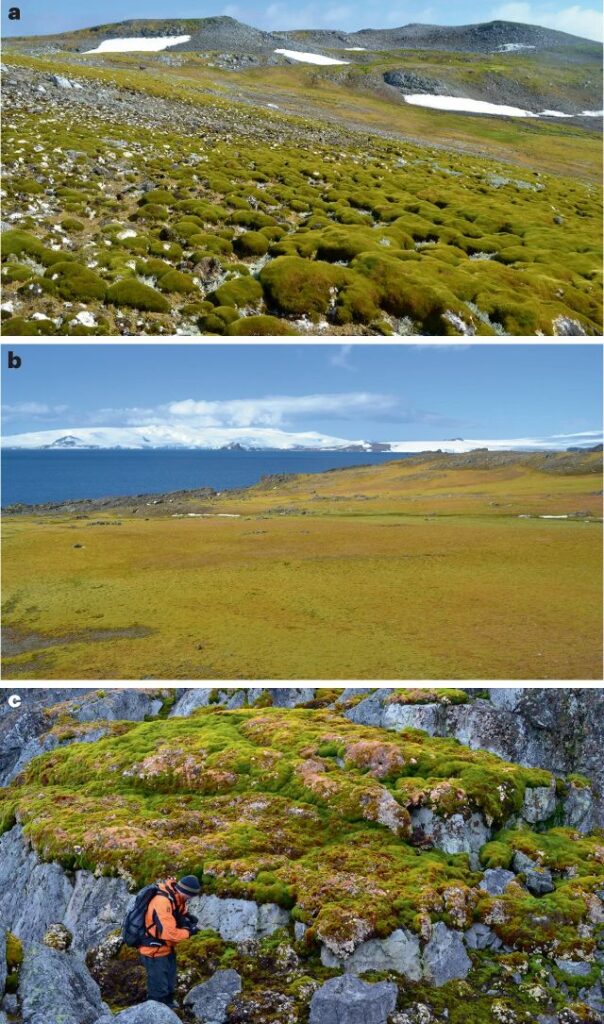Antarctica is the largest desert on Earth, covering 14.2 million square kilometres. But this one is not sandy, dry, or hot with endless dunes, as deserts are usually pictured. Instead, it is the coldest desert on the planet, an ice desert colder than its opposite northern people, the Arctic.
However, this vast ice desert is undergoing a concerning change. Rising temperatures are causing vegetation to expand rapidly, particularly in the Antarctic Peninsula, a northern part of the continent extending 800 miles (1,300 km) toward the southern tip of South America.
2023 was the warmest year on record, with unprecedented warming observed in both polar regions. According to the World Meteorological Organisation (WMO), Antarctic Sea ice reached record low levels during this time, creating conditions conducive to these vegetation shifts.
The Antarctic Peninsula is greening, according to a 2024 study published in the journal Nature Geoscience by scientists from the universities of Exeter and Hertfordshire in England and the British Antarctic Survey.
Using Landsat satellites operated by NASA and the US Geological Survey, researchers analysed images of the Antarctic Peninsula, a part of the continent that goes north towards the tip of South America, taken between 1986 and 2021. They found that the area covered by vegetation has significantly grown and is now ten times larger than 40 years ago, and the greening rate continues to accelerate.
The study found that the area of the peninsula swathed in plants increased from less than 1 square kilometre (0.6 square miles) in 1986 to almost 12 square kilometres (7.5 square miles) by 2021.
Below are images from the study “Sustained greening of the Antarctic Peninsula observed from satellites.”
Between 2016 and 2021, researchers found the greening rate to be around 33%. Researchers observing the speed of greening in the Antarctic Peninsula expressed concern and shock at this phenomenon. They said this raises serious concerns about the environmental future of the Antarctic Peninsula and of the continent.
While soil in Antarctica is almost non-existent, increasing plant life will add organic matter and allow soil to form, potentially paving the way for other plants to grow. The authors warned that the dramatic increase in vegetation will further develop and create new soils across the region, providing a medium to establish non-native and potentially invasive species.
“Our findings confirm that the influence of anthropogenic climate change has no limit in its reach,” Roland told CNN. “Even on the Antarctic Peninsula – this most extreme, remote, and isolated ‘wilderness’ region – the landscape is changing, and these effects are visible from space” (Paddison, 2024).
The article reports that extreme heat waves have recently gripped the Antarctic. In March 2022, temperatures in some parts of the continent reached up to 70 degrees Fahrenheit, or about 38°C.
The greening of Antarctica will not just change how the South Pole looks but will also have a profound ecological impact. As plant life develops in the Antarctic Peninsula, the region’s ecosystem dynamics will change, potentially affecting soil composition, carbon cycles, and local food webs.
Source:
Roland, T.P., Bartlett, O.T., Charman, D.J. et al. Sustained greening of the Antarctic Peninsula observed from satellites. Nat. Geosci. (2024). https://doi.org/10.1038/s41561-024-01564-5
Paddison, L. (2024, October 4). Scientists looked at images from space to see how fast Antarctica is turning green. Here’s what they found. CNN. Retrieved from https://edition.cnn.com/2024/10/04/climate/antarctica-greening-vegetation-satellite-images/index.html




Leave a Reply